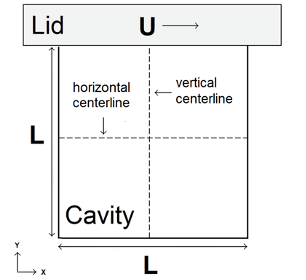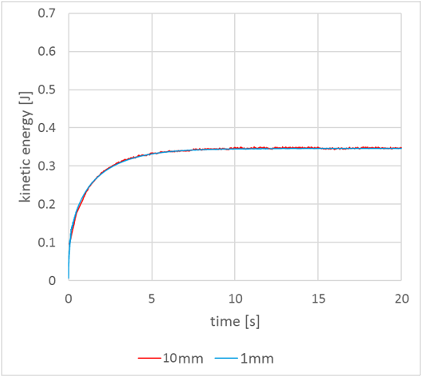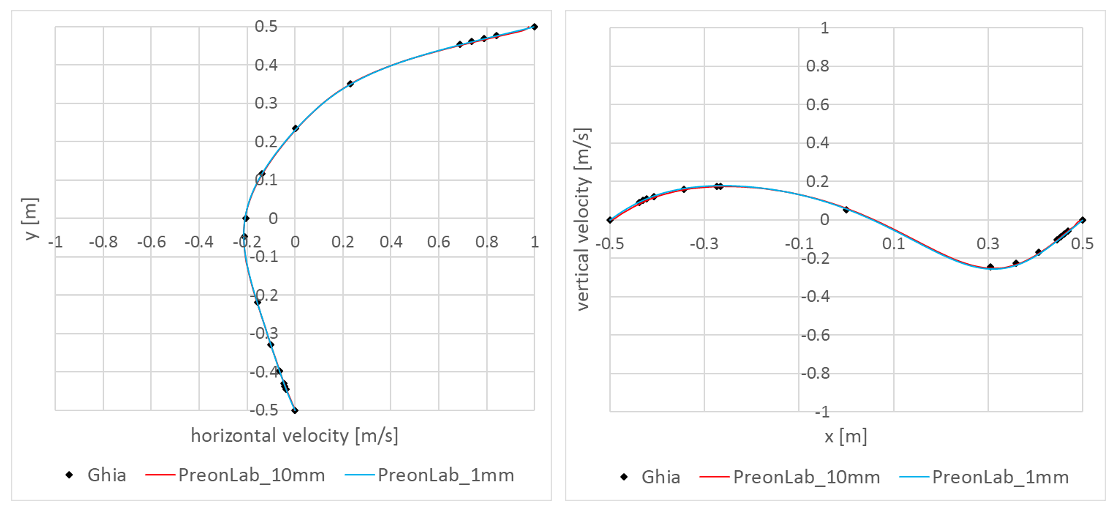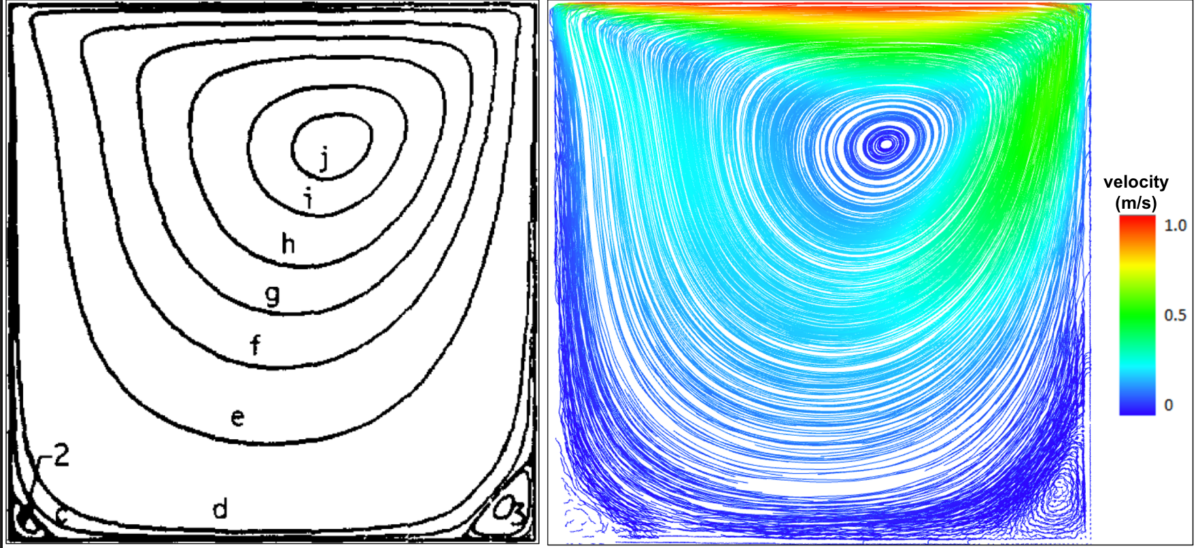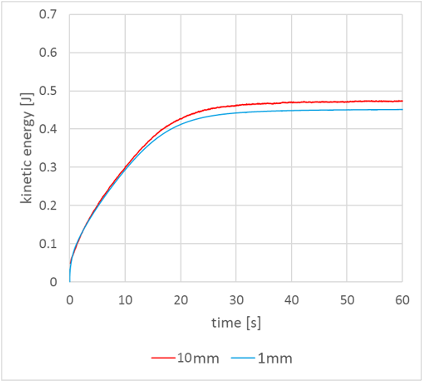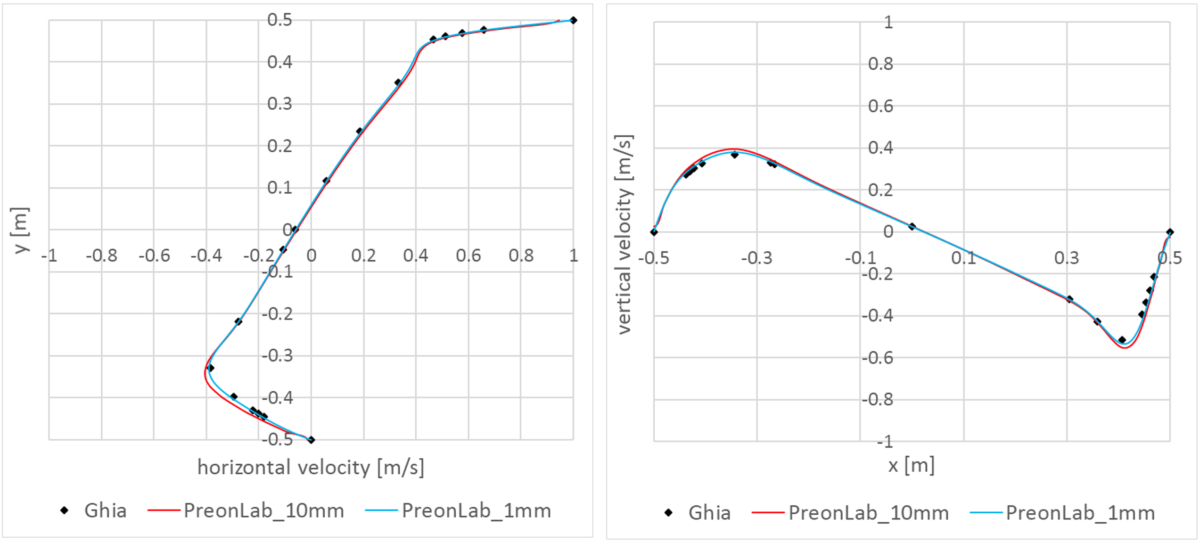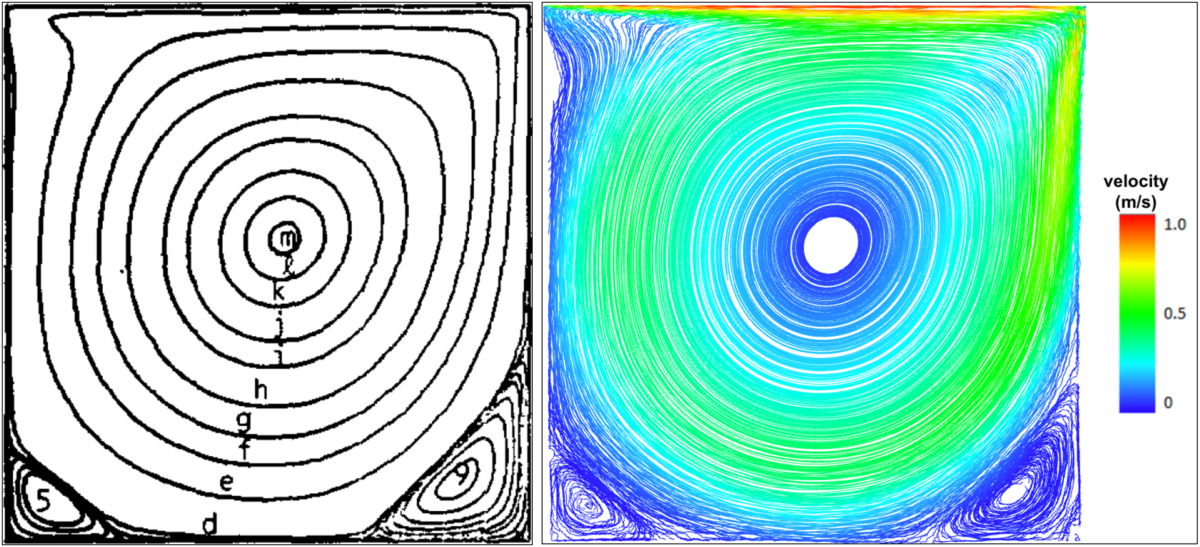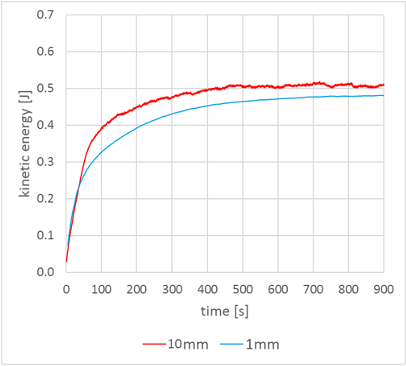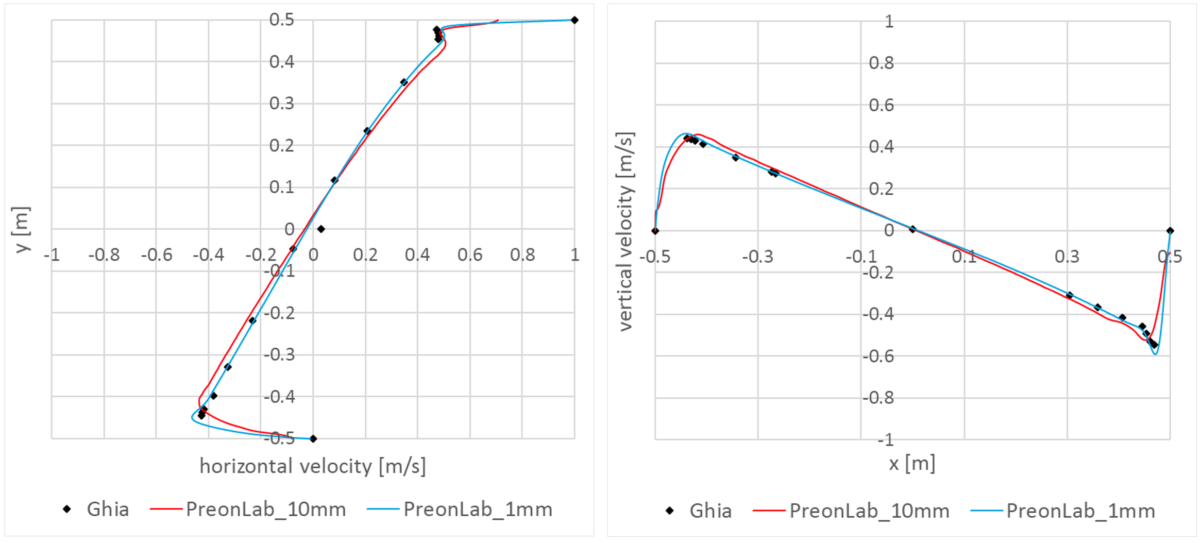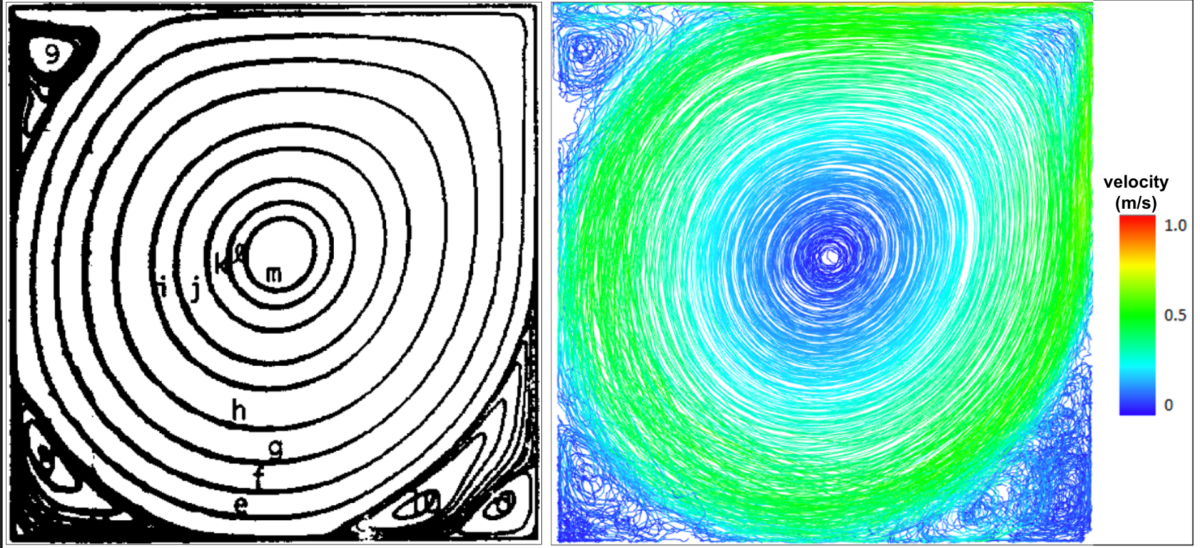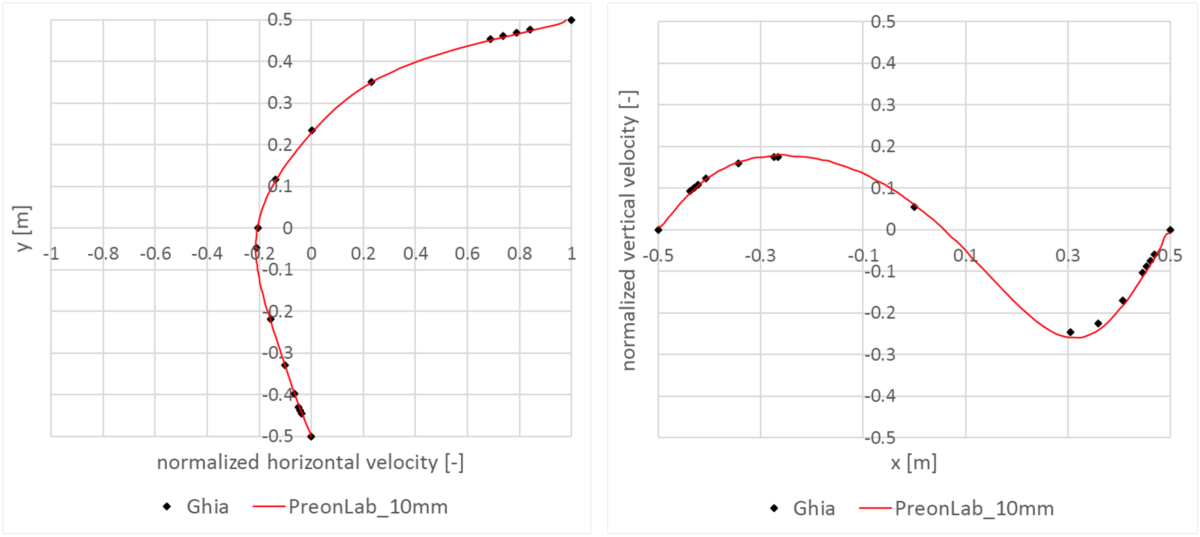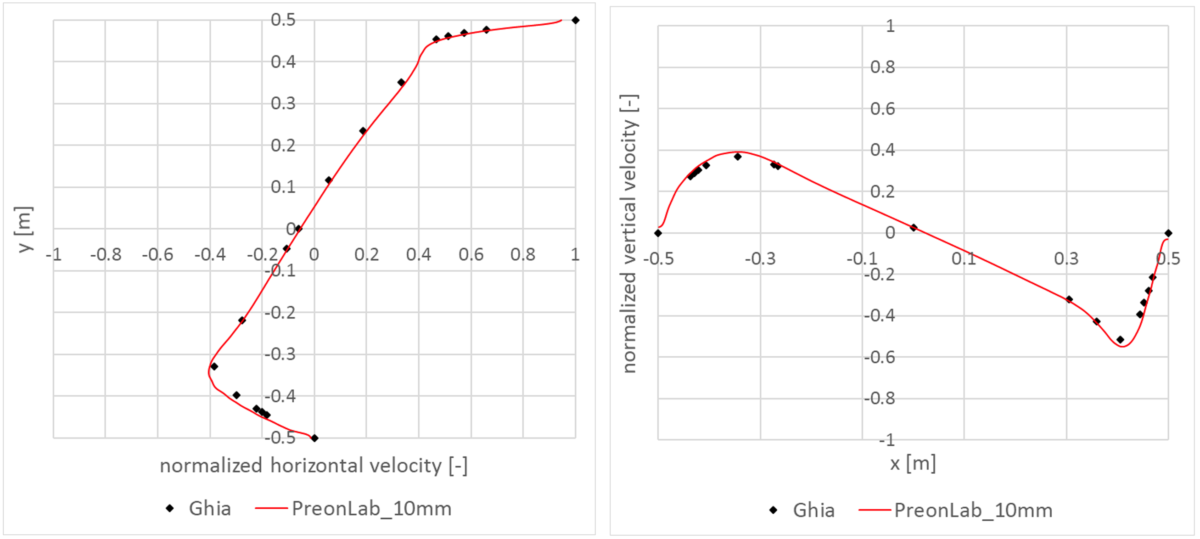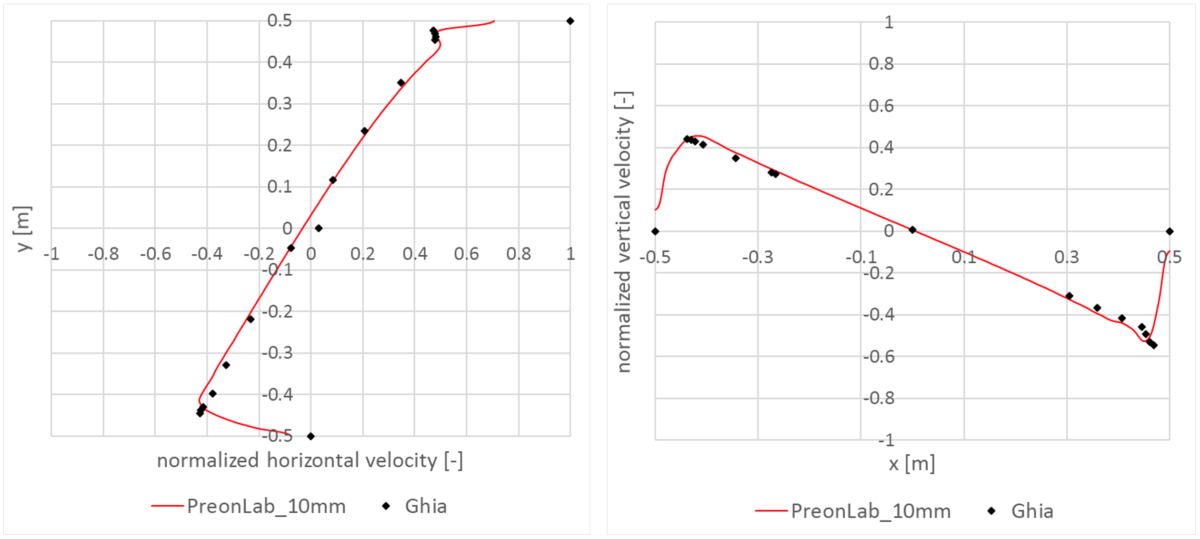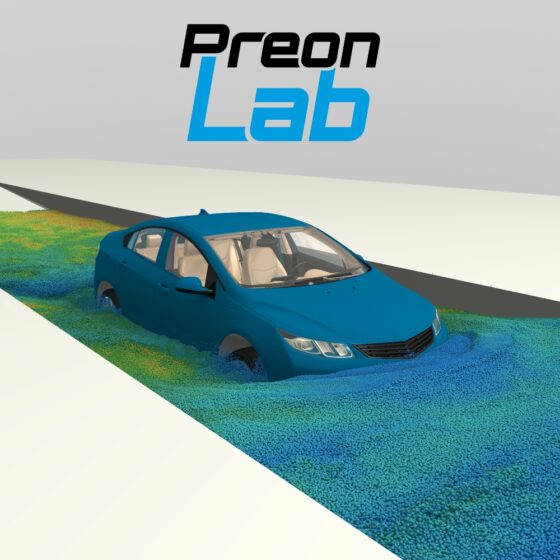[1] Ghia, U. K. N. G., Ghia, K. N., & Shin, C. T. (1982). High-Re solutions for incompressible flow using the Navier-Stokes equations and a multigrid method. Journal of computational physics, 48(3), 387-411.
[2] Santhosh Kumar, D., Suresh Kumar, K., & Kumar Das, M. (2009). A fine grid solution for a lid-driven cavity flow using multigrid method. Engineering Applications of Computational Fluid Mechanics, 3(3), 336-354.
[3] Poochinapan, K. (2012). Numerical implementations for 2D lid-driven cavity flow in stream function formulation. ISRN Applied Mathematics, 2012.
[4] Kuhlmann, H. C., & Romanò, F. (2019). The lid-driven cavity. In Computational Modelling of Bifurcations and Instabilities in Fluid Dynamics (pp. 233-309). Springer, Cham.
[5] Batchelor, G. K. (1956). On steady laminar flow with closed streamlines at large Reynolds number. Journal of Fluid Mechanics, 1(2), 177-190.
[6] Shen, J. (1991). Hopf bifurcation of the unsteady regularized driven cavity flow. Journal of Computational Physics, 95(1), 228-245.
[7] Auteri, F., Parolini, N., & Quartapelle, L. (2002). Numerical investigation on the stability of singular driven cavity flow. Journal of Computational Physics, 183(1), 1-25.
[8] Nobile, E. (1996). Simulation of time-dependent flow in cavities with the additive-correction multigrid method, part II: applications. Numerical Heat Transfer, 30(3), 351-370.
[9] C.-H. Bruneau and M. Saad. The 2d lid-driven cavity problem revisited. Comp. Fluids, 35:326–348, 2006.
[10] Poliashenko, M., & Aidun, C. K. (1995). A direct method for computation of simple bifurcations. Journal of Computational Physics, 121(2), 246-260.
[11] Fortin, A., Jardak, M., Gervais, J. J., & Pierre, R. (1997). Localization of Hopf bifurcations in fluid flow problems. International Journal for Numerical Methods in Fluids, 24(11), 1185-1210.
[12] Sahin, M., & Owens, R. G. (2003). A novel fully‐implicit finite volume method applied to the lid‐driven cavity problem—Part II: Linear stability analysis. International journal for numerical methods in fluids, 42(1), 79-88.

